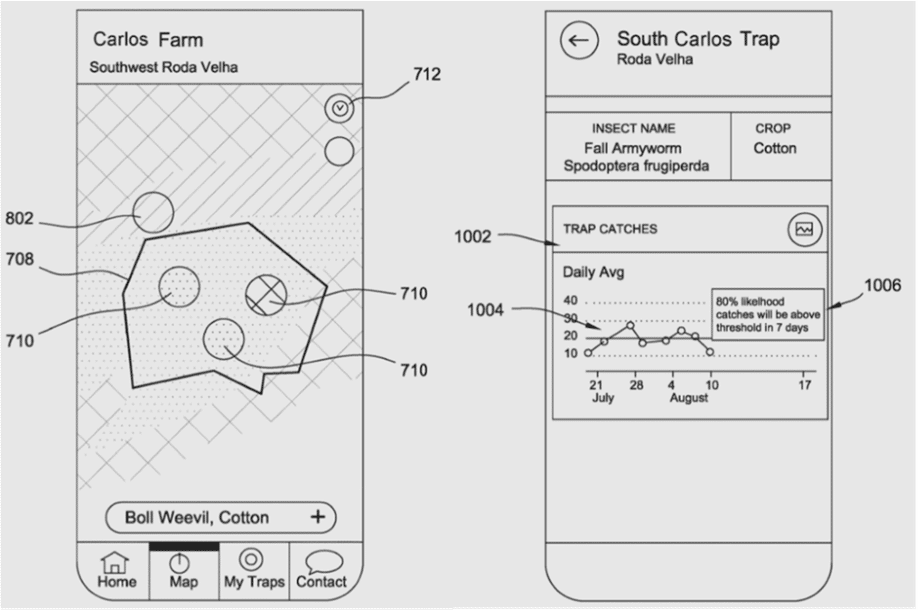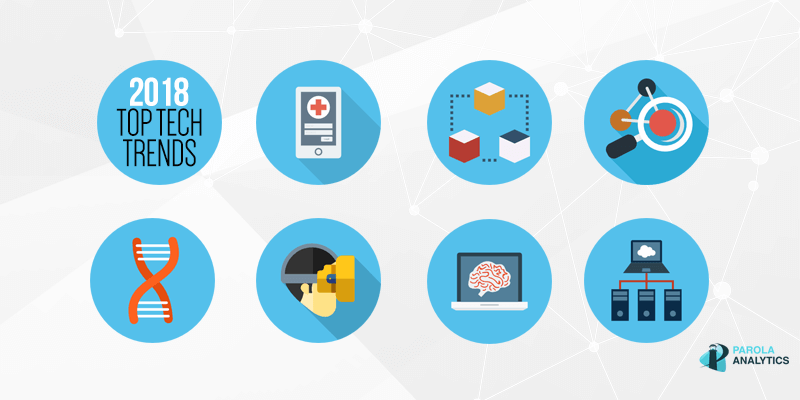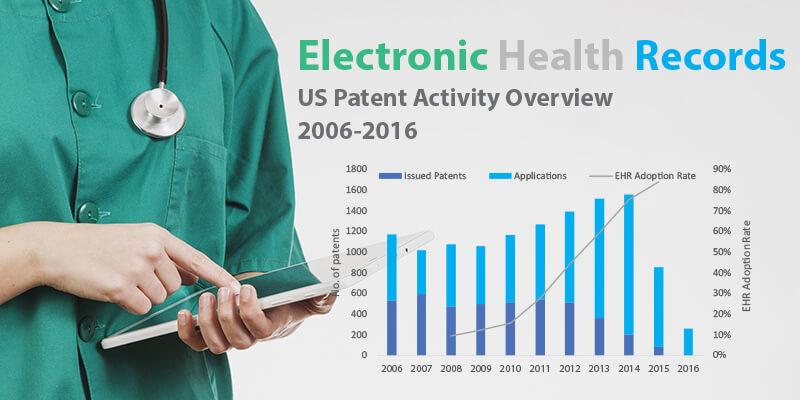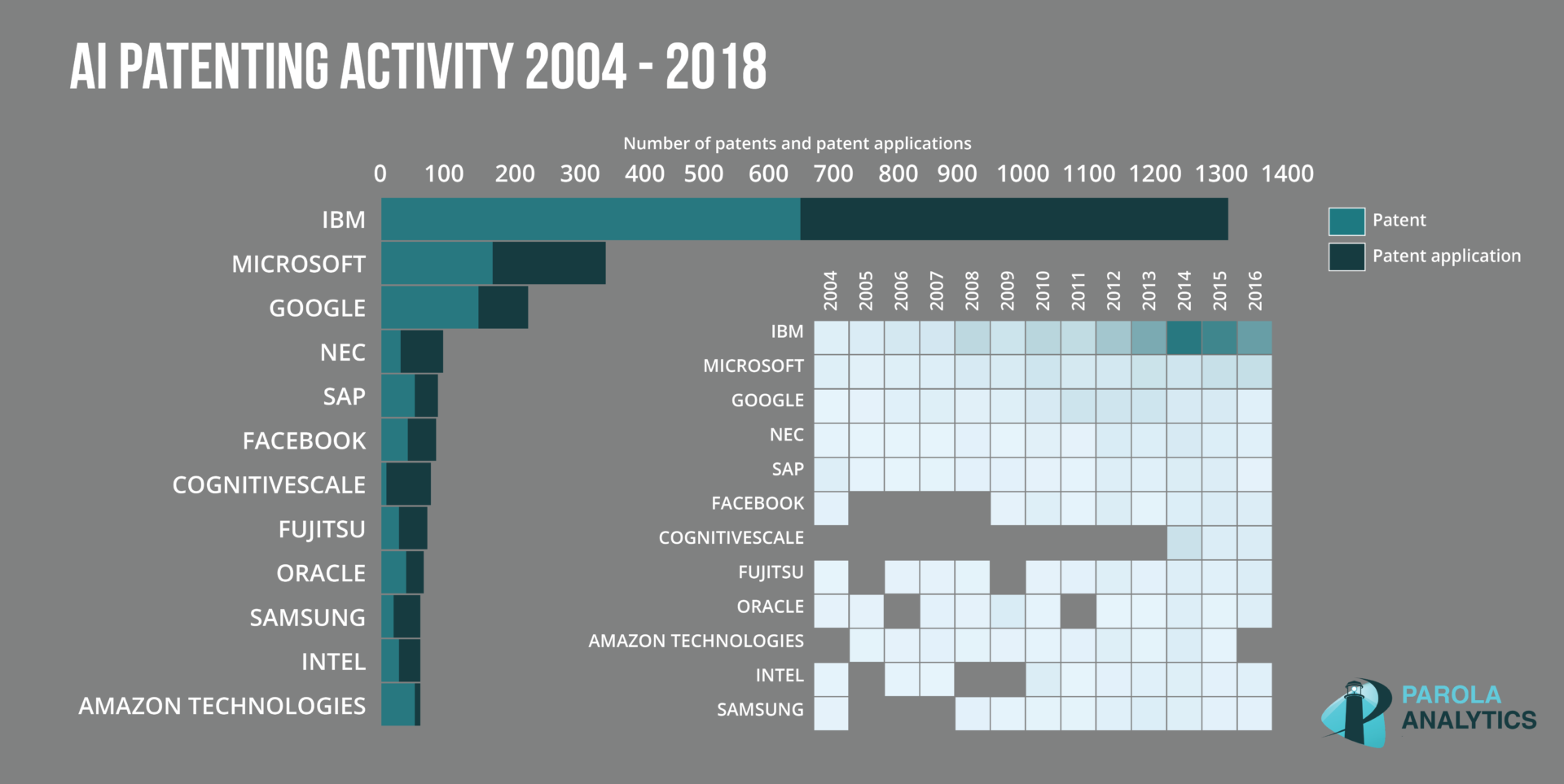An FMC patent application covers the use of artificial intelligence to see how vulnerable crop fields are to pests. The Philadelphia-based agricultural sciences corporation proposes leveraging data and machine learning to assist farms across a wide variety of locations.
When it comes to protecting crops from insects, using too much pesticide is a human health hazard, while using too little could render months of work fruitless. The deployment of chemicals in the fields must be proportional to the risk being mitigated. Pest pressure is the metric FMC’s invention is claimed to predict, and farmers could access it right on their phones.

Fig. 1. User interface screenshots of a mobile application that predicts pest pressures. The app may display pest pressure heatmaps [left] as well as graphical and textual data [right] on current, historical, and predicted future pest pressure [1006].
The patent application describes a machine learning algorithm that uses pest trap data, weather data, image data, and at least one identified geospatial feature. The latter may be an elevation feature, a body of water, a transportation route, or a factory—features that may influence the migration of pests.
Pest traps are conventional containment devices that help monitor the presence of harmful insects. FMC says the pest trap data may also be sourced from any device that similarly monitors the presence of fungi, weeds, and crop diseases. Data on fungi, for instance, may come from sensing devices that quantitatively measure spore levels. Large volumes of high-value crops, especially in developing countries, have been lost to fungal infections in the past, and a severe outbreak can be devastating both economically and in terms of food security.
Weather data may include, for example, temperature, humidity, wind, and rainfall. The machine learning algorithm would account for current and historical measurements taken at one or more geographic locations, along with forecasts of weather conditions.
The image data used by the pest prediction system, according to FMC, may be satellite and/or drone images taken of a particular geographic location. These would also facilitate the identification of relevant geospatial features.
FMC’s invention specifically examines correlations between pest pressure and geospatial features. For example, a field’s proximity to a river or a railroad track where material is transported may be linked to higher pest pressure. The system may also point to the fact that biodiverse farmlands—those with a variety of crop and non-crop habitats across a geographic area—are subject to lower pest pressure. These complex landscapes house natural predators to invasive insects as well as resistance genes and anti-insect compounds. The pest prediction system can serve as a way to check an agricultural operation’s natural defenses against pests.
Data generated by the system, including pest pressure heatmaps and other graphical representations, may be displayed on a mobile device. FMC states that predictions may be generated in real time, and pest pressure data, both current and historical, might be accessible online or offline.

Fig. 2. A block diagram illustrating data flow through a computer system used in predicting pest pressures in accordance with one embodiment of FMC’s disclosure.
Farming, in many ways, is a balancing act of the predictable and unpredictable. For as much science has been figured out when it comes to growing crops, there is as little certainty for when forces of nature could ruin an otherwise perfect harvest. FMC’s machine learning method could provide farmers with valuable insight on exactly how much pesticide to use. This type of precision matters not only in terms of safety for consumers. U.S. farms use over a billion pounds of insecticide each year, and their workers are subject to unusually high pesticide exposure, which can be fatal. By combining artificial intelligence and readily available data, unnecessary illness and death can be avoided, from field to fork.
The featured patent application, “Systems And Methods For Predicting Pest Pressure Using Geospatial Features And Machine Learning”, was filed with the USPTO on October 27, 2020 and published thereafter on September 9, 2021. The listed applicant is FMC Corporation. The listed inventors are Sukhvinder Singh, Sara Catherine Sterling, Simon Bridge Barratt, Ruixue Gong, Wandi Lin, Sai Anirudh Mandagondi, Cassandra Pallai, and Ross Joseph Putterman.






